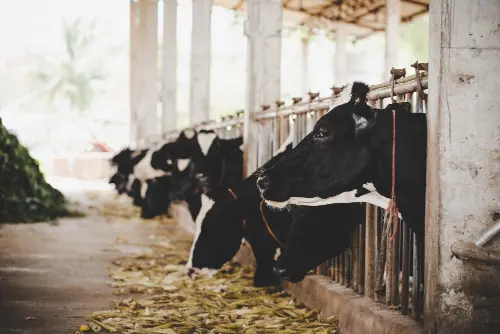BACKGROUND
The livestock sector signifies itself by the fact that it represents around 40% of the agriculture GDP, and is directly or indirectly involved in the livelihood of around 1.3 billion people all over the globe. Meat is an important sub-sector of the food industry, a major contributor to the world economy, fulfilling the global protein demands. Over the past 50 years, the human population has doubled; however, developments in livestock production have been found to reduce the proportion of hungry people in the world. The world is facing various interrelated challenges; therefore, despite the growth in food production, one out of seven people is still unable to fulfill his daily protein requirements. By the year 2050, the population is expected to reach 9 billion people thereby increasing the global demand for food which is forecasted to increase by 70% to meet growing demands. An increase in demand for food and especially livestock products is correlated to rising incomes, increased urbanization, and change in lifestyle with a preference for processed food. Increasing world population, rising incomes, increased urbanization, and lifestyle change have led to increased demand for livestock products especially meat across the globe.
Small ruminants fattening is a sub-sector of livestock that provides quality mutton are key contributors to the economy of the poor farmers. With the increase in demand for quality meat, producers are looking for efficient and less labor-intensive feeding strategies. One of the major constraints to the sustainable development of the livestock sector is the availability of feed and fodder. With the ongoing climatic changes, it is becoming difficult to produce quality forage for ruminants.
CONVENTIONAL SMALL RUMINANT REARING METHODS
Following are some traditional ways of rearing small ruminants;
- Grazing
- Grazing, fresh forage feeding, or dry roughages (wheat, gram, and guar straw)
- Silage plus concentrate feeding
The animal reared in conventional feeding systems are unable to achieve their true growth potential. The average daily gains fattened conventionally are reported to achieve an average daily gain of 150 and 120 grams in sheep and goats respectively. Whereas, In developed countries, farmers can get daily gains of 300 grams in sheep and >220 grams in goats.
STRAW-BASED TOTAL MIXED RATIONS: A NOVEL FEED TECHNOLOGY
Unlike the large ruminants, small ruminants are categorized as concentrate selectors which enables them to select the concentrate portion from a conventional total mixed ration (TMR). Recent work on the use of straw-based pelleted TMR has given promising results in small ruminant fattening.
BENEFITS OF FEEDING TMR PELLETS
This pelleting of finely chopped straw as a TMR is an innovative feed technology with the following benefits;
- Contains the optimal amount of wheat straw and concentrates, minerals, and vitamins in pellet form
- Reduces the chances of feed selection in small ruminants
- Animals fed on pelleted TMR do not require any grazing or additional forage feeding
- Improves intake significantly
- Easy to transport and require less storage space
- Lowers the labor requirements for feeding significantly
- Modern TMR pellet feeding shortens the duration of feeding due to faster growth rates
EXPERIMENTS ON PELLETED TMR
In 03 year project, three different dry roughages including wheat straw, Rhodes grass hay, and oat hay were tested @ 15 and 25% in both conventional and pelleted TMR’s for sheep and goats. Animals included in the studies were 6 to 10 months of age. The research trials lasted for 114 days including 02 weeks for feed adaptability, 12 weeks for growth data collection, and last week for nutrient digestibility. At the end of the experiments, both sheep and goats were slaughtered to see changes in selected carcass characteristics and rumen morphometry. Straw sources were ground at 3 mm or 8 mm using a hammer mill, mixed with concentrate ingredients in a double ribbon mixer, and then pellet as TMR.
KEY FINDINGS RESULTS OF THE PROJECT
- Animals fed on pelleted TMR had significant improvement in growth, goats gaining >200 grams/day and sheep >250 grams/day
- The average dry matter intake in goats was ≈ 1200 grams and in sheep ≈ 1600 grams per day.
- Carcass percentage in goat remained > 50% and in sheep > 48%.
- Feeding pelleted lowered the labor cost by 50%
- No negative impact on rumen health was observed
SUGGESTIONS
- Purchase of animals should be on a live weight basis
- Animals should be inducted at the age of 6 to 10 months, and live weight should range from 14-18 kg.
- Animals purchased from the market should be kept in quarantine after arrival, dewormed, and vaccinated against prevailing diseases
- A vaccination schedule should be devised after consultation with the Local Vet
- Animals must have free access to fresh water all the time
Strategies for Shifting from Forage to TMR pellets
Animals are not used to total mix ration as they are brought from grazing background. For successful transition to pelleted TMR, animals should be shifted to P-TMR through a stepwise fashion starting starting from 400 grams per day then increase in feed increment after every 3 days. Then after 2 weeks ad libitum feeding strategy should be adopted.

